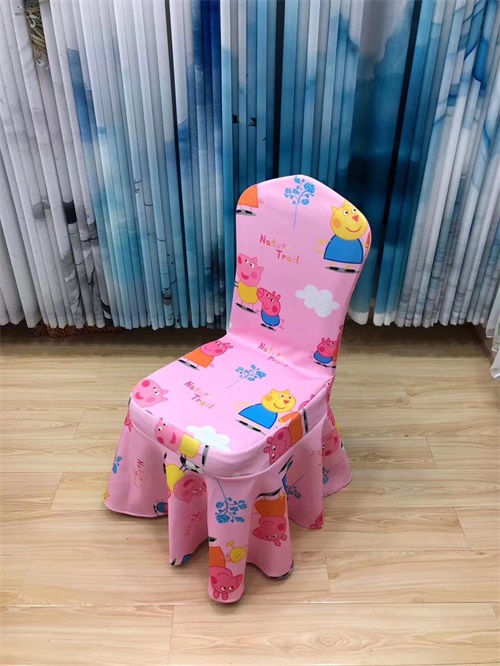酒店布草品質好不好?你看這些就夠了
時間:2023-12-14 來源:https://www.dngfsy.com/
一、材質
1、 Material
目前布草的原料依然是以棉花為(wei) 主,棉花的品質在根本上決(jue) 定了麵料的好壞。
At present, cotton is still the main raw material for linen, and the quality of cotton fundamentally determines the quality of the fabric.
粗絨棉:也叫亞(ya) 洲棉,原產(chan) 於(yu) 印度。產(chan) 量低、纖維粗短,不適合機器紡織,棉纖維長度小於(yu) 23mm。
Coarse cotton: also known as Asian cotton, originating from India. Low yield, coarse and short fibers, not suitable for machine spinning, cotton fiber length less than 23mm.
細絨棉:常見的棉花。也叫陸地棉,原產(chan) 於(yu) 中美洲。在棉花總產(chan) 量中占85%,在中國棉花總產(chan) 量中占98%。目前大多數平價(jia) 棉織品都采用細絨棉,棉纖維長度23~33mm。
Fine velvet cotton: a common type of cotton. Also known as upland cotton, it is native to Central America. It accounts for 85% of the world's total cotton production and 98% of China's total cotton production. At present, most affordable cotton fabrics use fine velvet cotton, with a cotton fiber length of 23-33mm.
長絨棉:高級的棉花。也叫海島棉,原產(chan) 於(yu) 南美洲。纖維長、強度高、吸水性強,呈現蠶絲(si) 光澤,纖維長度一般大於(yu) 33mm,甚至能達到60-70mm。
Long staple cotton: premium cotton. Also known as island cotton, it is native to South America. The fiber is long, strong in strength, and has strong water absorption, presenting a silk luster. The fiber length is generally greater than 33mm, and can even reach 60-70mm.
二、工藝
2、 Craftsmanship
紗線的粗細、織布的密度是決(jue) 定麵料品質的兩(liang) 大重要指標,就是常說的“紗支密度”。
The thickness of the yarn and the density of the woven fabric are two important indicators that determine the quality of the fabric, commonly known as "yarn count density".
紗支
Yarn count
先說紗支,紗支是指紗線的粗細程度,支數越高,紗越細,對原料要求就越高。
Let's first talk about yarn count, which refers to the thickness of the yarn. The higher the count, the finer the yarn, and the higher the requirements for raw materials.
紗支的計算方法,可以簡單理解為(wei) :將一磅重的棉花紡成一根840碼長度的紗,這根紗的粗細就是1支;紡成8400碼長,這根紗的粗細就是10支;長度為(wei) 840碼的N倍,粗細就是N支,支數數多,紗就越細。
The calculation method of yarn count can be simply understood as: spinning one pound of cotton into a yarn of 840 yards in length, and the thickness of this yarn is one count; Spinning it into 8400 yards long, the thickness of this yarn is 10 pieces; The length is N times that of 840 yards, and the thickness is N pieces. The more pieces there are, the thinner the yarn.
紗支采用英製單位S,雙股紗則標記為(wei) S/2,如果經紗和緯紗支數不同,例如經紗40支、緯紗30支,麵料支數會(hui) 表示為(wei) 40S*30S。
The yarn count is in English units of S, while double ply yarn is marked as S/2. If the number of warp and weft yarns is different, such as 40 warp and 30 weft yarns, the fabric count will be represented as 40S * 30S.

密度
density
密度是指麵料每平方英寸中經紗和緯紗的根數,例如經紗133根,緯紗72根,密度就是133*72。
Density refers to the number of warp and weft yarns per square inch of a fabric, for example, 133 warp yarns and 72 weft yarns, resulting in a density of 133 * 72.
業(ye) 內(nei) 常用經緯紗根數之和來描述,用單位T來表示,例如經紗133根,緯紗72根,那麽(me) 麵料密度約為(wei) 200T(根)。高支是高密的前提,紗支越高,才能織出更密的麵料來。一般60S/300T以上就可以稱為(wei) 高支高密麵料。
The sum of warp and weft yarns is commonly used in the industry, expressed in units of T. For example, if there are 133 warp yarns and 72 weft yarns, the fabric density is about 200T (yarn). High yarn count is a prerequisite for high density, and the higher the yarn count, the more dense the fabric can be woven. Generally, fabrics above 60S/300T can be referred to as high count and high-density fabrics.
但不同支數對應的麵料密度是有所限製的。 而且密度不是越高越好,隨著密度的增加,麵料會(hui) 變得密實甚至防水,透氣度、舒適度就大打折扣。
However, there are limitations on the density of fabrics corresponding to different counts. Moreover, the higher the density, the better. As the density increases, the fabric will become dense and even waterproof, greatly reducing breathability and comfort.
編織方式
Weaving method
麵料的編織方式,也是判斷品質的一個(ge) 依據。大致上分為(wei) 平紋、斜紋、緞紋三種。
The weaving method of the fabric is also a basis for judging the quality. It can be roughly divided into three types: plain, twill, and satin.
平紋:經紗和緯紗一上一下規律交織形成的織物組織,經緯紗的交織點多。正反麵外觀相同,質地堅牢挺括、表麵平整。平紋密度一般不高,支數在30支左右,輕薄透氣,價(jia) 格也較低。也有少數繡花麵料采用高密平紋。
Plain weave: A fabric structure formed by the regular interweaving of warp and weft yarns, with multiple interweaving points between warp and weft yarns. The front and back have the same appearance, with a firm and firm texture and a smooth surface. The plain weave density is generally not high, with around 30 pieces, lightweight, breathable, and affordable. There are also a few embroidered fabrics that use high-density plain patterns.
斜紋:經紗和緯紗至少隔兩(liang) 根紗才交織一次,經緯紗交織點少,表麵浮線較長,手感鬆軟,密度較高,比較厚實,立體(ti) 感強。斜紋也是一種常見麵料織法,支數有30支、40支、60支不等。
Twill weave: The warp and weft yarns are interwoven at least once every two yarns. The warp and weft yarns have fewer interweaving points, longer surface float lines, a soft texture, high density, and a relatively thick texture, with a strong sense of three dimensionality. Twill is also a common fabric weaving method, with counts ranging from 30, 40, and 60.
緞紋:經緯紗至少隔三根紗才交織,織物密度更高,更加厚實,布麵平滑細膩,富有光澤,類似錦緞。經紗浮在織物表麵,所以一般采用高支的精梳紗,比同類平紋、斜紋成本更高。
Satin pattern: The warp and weft yarns are interwoven at least three times, resulting in a higher density and thickness of the fabric. The fabric surface is smooth and delicate, with a glossy finish, similar to brocade. The warp yarn floats on the surface of the fabric, so high count combed yarn is generally used, which is more expensive than similar plain and twill yarns.
資訊推薦Information
聯係我們(men) Information
